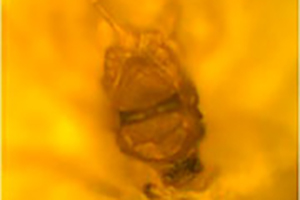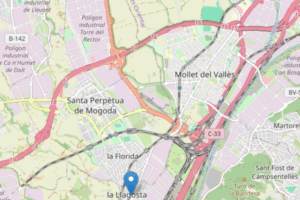
An innovative smart system for integrated management of infestation through photonics
September 30, 2020
A new energy optimization system for teleworking assistance
October 19, 2020The CITCEA centre of the UPC has begun to participate in POSYTYF, a European project that aims to develop solutions for network operators that enable the integration of more renewable energy sources (RES) into the electricity grid. The project will consider future scenarios with 100% renewable generation and will analyse how renewable power stations should be designed and controlled to ensure the reliability and stability of the electricity grid.
The aim of POSYTYF (powering system flexibility in the future through RES) is to develop new knowledge, models and tools to increase the flexibility of the electricity system through what are known as dynamic virtual power plants (DVPP). The DVPP concept adds dynamic aspects, which will be necessary in future electricity systems, to the classic virtual power plants (VPP) that have been worked on in numerous projects in recent years.
POSYTYF will propose solutions and methods to support the stability of the grid that will be implemented immediately in the current electricity system, considering the regulatory context. In addition, future networks will be investigated with massive levels of RES and recommendations will be formulated on the technical and regulatory developments that are required to make these high-penetration renewable generation networks possible.

CITCEA UPC will participate in the project by defining the various systems that will be studied and analysing the grid requirements (grid codes) that will be necessary in future situations with high penetration of renewables and power electronics and developing simulation and co-simulation models of different situations.
POSYTYF is comprised of 11 partners from four EU countries, and is coordinated by the École Centrale de Nantes, and 9 further partners: Eidgenoessische Technische Hochschule Zürich, the Universidad Pontificia, the Instituto de Investigación Tecnológica, Hochschule für Technik und Wirtschaft Berlin, Réseau de Transport d’Electricité, Centro de Investigaciones Energética Medioambientales y Tecnológicas, Iberdrola Generación España, Enedis, Bachmann Electronic, and Dowel Management.
The project will take three years and is supported by the European Commission’s H2020 programme. It has been allocated a budget of 4.7 million euros.
Related Projects
- The company Trace ID and the group Twin Investors, in collaboration with the Textile Technology research group (TECTEX), which is part of the Institute of Textile Research and Industrial Cooperation of Terrassa (INTEXTER) at the Universitat Politècnica de Catalunya - BarcelonaTech (UPC), are developing electronic devices to identify, monitor, and study the traceability of the products in which they are embedded.
- The Hydrogeology Group (GHS) at the Universitat Politècnica de Catalunya - BarcelonaTech (UPC) is participating in the LIFE REMAR project to develop an innovative and sustainable solution for the reuse of treated wastewater through infiltration, with the aim of increasing the availability of freshwater resources and improving the state of ecosystems.
- A team from the Environment Centre Laboratory (LCMA) of the Universitat Politècnica de Catalunya - BarcelonaTech (UPC) is taking part in a study commissioned by the city councils of la Llagosta, Mollet and Santa Perpètua (in Vallès Occidental), with the main objective of identifying the impact of industrial plants on the generation of unpleasant odours and continuously monitoring air quality in these municipalities.
- A multidisciplinary team of researchers from the Research Group in Smart and Sustainable Resources and Industries (RIIS), the Sustainable Mining Research Group (GREMS), and the Construction Materials and Roads (MATCAR) group at the Universitat Politècnica de Catalunya – BarcelonaTech (UPC) is leading the VALORFIN project. The aim is to develop a technological solution for the valorisation of the fine fraction of construction and demolition waste (CDW), transforming it into new low-CO₂-emission cementitious materials, while also reducing the presence of hazardous materials in this waste.




